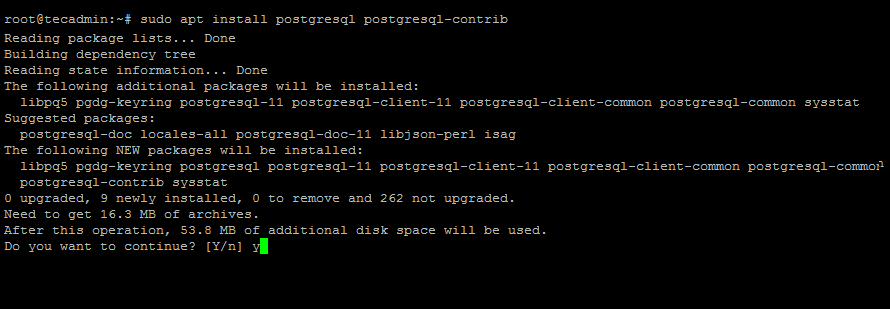
If a role exists within Postgres, a Unix/Linux username with the same name is able to sign in as that role.

Upon installation, Postgres is set up to use ident authentication, meaning that it associates Postgres roles with a matching Unix/Linux system account. These are in some ways similar to regular Unix-style accounts, but Postgres does not distinguish between users and groups and instead prefers the more flexible term role. PostgreSQL uses a concept called roles to handle client authentication and authorization. Step 3 - Using PostgreSQL Roles and Databases Now that PostgreSQL is up and running, we will go over using roles to learn how Postgres works and how it is different from similar database management systems you may have used in the past. OutputCreated symlink /etc/systemd/system//rvice → /usr/lib/systemd/system/rvice. To create a database cluster, run the script using sudo and with the -initdb option: The Postgres package we installed in the previous step comes with a handy script called postgresql-setup which helps with low-level database cluster administration. The postgres database is a default database designed for use by users, utilities, and third-party applications. The template1 database is a template of sorts used to create new databases everything that is stored in template1, even objects you add yourself, will be placed in new databases when they’re created. Creating a database cluster consists of creating the directories in which the database data will be placed, generating the shared catalog tables, and creating the template1 and postgres databases. A database cluster is a collection of databases that are managed by a single server instance. You have to create a new PostgreSQL database cluster before you can start creating tables and loading them with data. Step 2 - Creating a New PostgreSQL Database Cluster
#Install postgresql software#
Now that the software is installed, you will perform some initialization steps to prepare a new database cluster for PostgreSQL. When given the prompt, confirm the installation by pressing y then ENTER:īy default, Rocky Linux 9 installs PostgreSQL version 13.
#Install postgresql install#
sudo dnf install postgresql-server glibc-all-langpacks.You should also install another package called glibc-all-langpacks at the same time to improve multilingual support in Postgres. PostgreSQL is available from Rocky Linux’s default software repository, and can be installed with dnf, Rocky’s package manager.

To set this up, see our Initial Server Setup guide for Rocky Linux 9. This server should have a non-root user with administrative privileges and a firewall configured with firewalld.

To complete this tutorial, you will need a server running Rocky Linux 9. It’s used by many popular projects, both large and small, is standards-compliant, and has many advanced features like reliable transactions and concurrency without read locks.īy following this guide, you will install the latest version of PostgreSQL on a Rocky Linux 9 server. PostgreSQL, also known as Postgres, is a relational database management system that provides an implementation of Structured Query Language, better known as SQL. They provide a structured way to store, organize, and access information. Relational database management systems are a key component of many websites and applications.


 0 kommentar(er)
0 kommentar(er)
